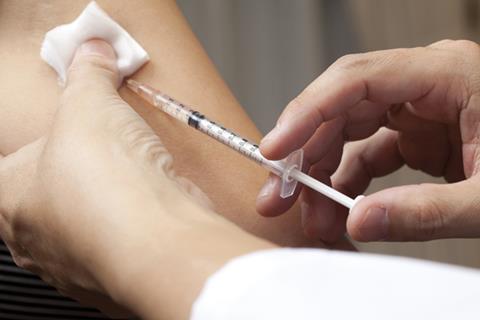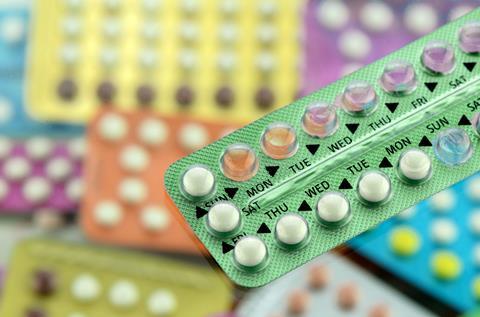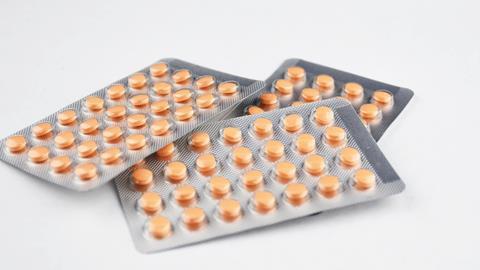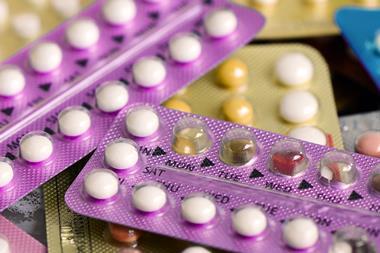Meera Senthilingam
This week, a compound produced by, and yet voluntarily ingested by millions of women worldwide. And it used to have a rather unique method of retrieval. Here's Hayley Birch:
Hayley Birch
One of the less savoury ways to make your living in 1930s Canada was as a collector of pregnant horses' urine. In those days, you could earn a crust by standing next to mare and waiting for it to empty its bladder. Of course, it took a certain kind of person to do this job, and not just because of the obvious social stigma attached to it - you also had to be nimble on your feet. As Gordon Stevenson noted in a Canadian medical journal in 1945, 'To do this job well requires a very active, agile individual, as many mares give little or no indication that they are about to urinate.'

So, as you might imagine, it wasn't easy for a farmer to find a good horse urine collector. But those who did reaped the benefits. Around the time Stevenson published his article, millions of dollars were being paid to farmers in Quebec and Western Ontario for their equine fluids. Why? Because these fluids contained a precious commodity: oestrogen.
Taking oestrogen was, and still is, an effective way to relieve the symptoms of menopause. As one of the main female sex hormones, it's combined with synthetic progesterones to create hormone replacement therapies. Initially, though, women who wanted to take oestrogen had to undergo expensive, twice-weekly injections. It wasn't until 1941 that oral oestrogen - still prepared from horse urine - was available commercially at a price that more or less anyone could afford.

Oestrogen is perhaps better known today as a component of another widely used pharmaceutical product: the contraceptive pill. The form most often used in the pill is the synthetic compound ethinyloestradiol, commonly known as EE2 - levels are carefully balanced with other hormones to stop the ovaries releasing an egg. Besides the distinct advantage over its natural equivalent of being prepared in the lab rather than from horse urine, EE2 is also up to 20 times more potent when given orally. Hans Inshoffen and Walter Hohlweg realised this late in the 1930s when they fed it to lab rats. But to understand it, you have to know a bit about oestrogen's chemical structure.

The molecule that provides the basis for EE2 is oestradiol, one of three main forms of oestrogen that are produced in humans, the others being oestrane and oestrone. All three have a four-ringed steroid structure. In oestradiol, the addition of one vital acetylene group to the end ring turns it from oestradiol, as you would find it naturally, to EE2, the form that's used in the pill. In other words, sticking on a couple of triple-bonded carbon atoms and a hydrogen gives you a synthetic hormone that's 20 times more effective. The reason for this is that the acetylene group blocks liver enzymes that would otherwise put the hormone out of action.
So we've now got a potent form of oestrogen that we can synthesise by the bucket load without going anywhere near a stable. And we've got a 99 per cent effective method of birth control that's taken by millions of women. Great. But where does all that synthetic oestrogen end up? Well, just like in horses, it ends up as a waste product. Unlike in the horses though, there's no one standing around waiting for ladies to relieve themselves, so most of it goes into the water supply. And it's leading scientists to wonder what all these synthetic hormones are doing out there.
In one recent study, the type of oestrogen that's used in the contraceptive pill was added to a test lake in concentrations comparable to those found in waste water. These are very low concentrations. But after just a couple of summers, the male fish in the lake had started to produce egg proteins - according to the scientists, they were becoming feminised. As it happens, some fish are known to switch genders at some point during their lifetimes, but in this case it was one-way traffic. And it does beg the question: what other animals might these synthetic hormones be affecting? Well, no one's entirely sure, but it could be bad news for men, as some studies have shown that environmental oestrogens are damaging to human sperm cells.

Incidentally, those fish experiments were carried out in Canada, where in the 1930s, as we know, any fit, agile young men who could be persuaded would have been breaking a sweat trying to collect a pint of horse urine so that a few measly milligrams of oestrogen could be extracted. Just decades later, there's more oestrogen floating around than a horse farmer could ever imagine, but perhaps more than would have been desirable for any of those fit young men.
Meera Senthilingam
So benefits to women, leading to a potentially unpleasant future for men. That was Hayley Birch, with the the chemistry of a compound perhaps undesirably uniting the genders. Now, next week the compound that perks people up all over the world, and its origins in becoming a global neccessity.
Katherine Holt
Almost every nation on earth has their favourite version of a caffeinated drink - from green tea in China to yerba mate in Argentina. The caffeine containing kola bean has for centuries been used by the people of West Africa to increase energy.
Coffee was first drunk in Ethiopia where the coffee plant grows wild. Legend has it that a goat herder noticed that his goats became sleepless and excitable after nibbling at the berries on the coffee bush. After trying it himself he experienced the same effects. Whatever the truth of this tale, coffee found its way to North Africa, through Persia and eventually to Europe via Turkey.
Meera Senthilingam
And now you know the beginnings of coffee - and therefore caffeine's - world domination, join Katherine Holt to discover its effect on our body, and whether there's any evidence to back up suggestions that it may not be good for us in next - all in week's Chemistry in its element. Until then, thank you for listening. I'm Meera Senthilingam.













No comments yet